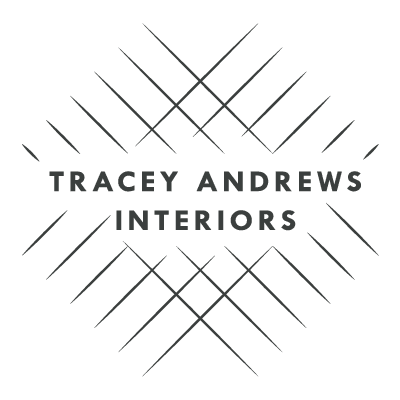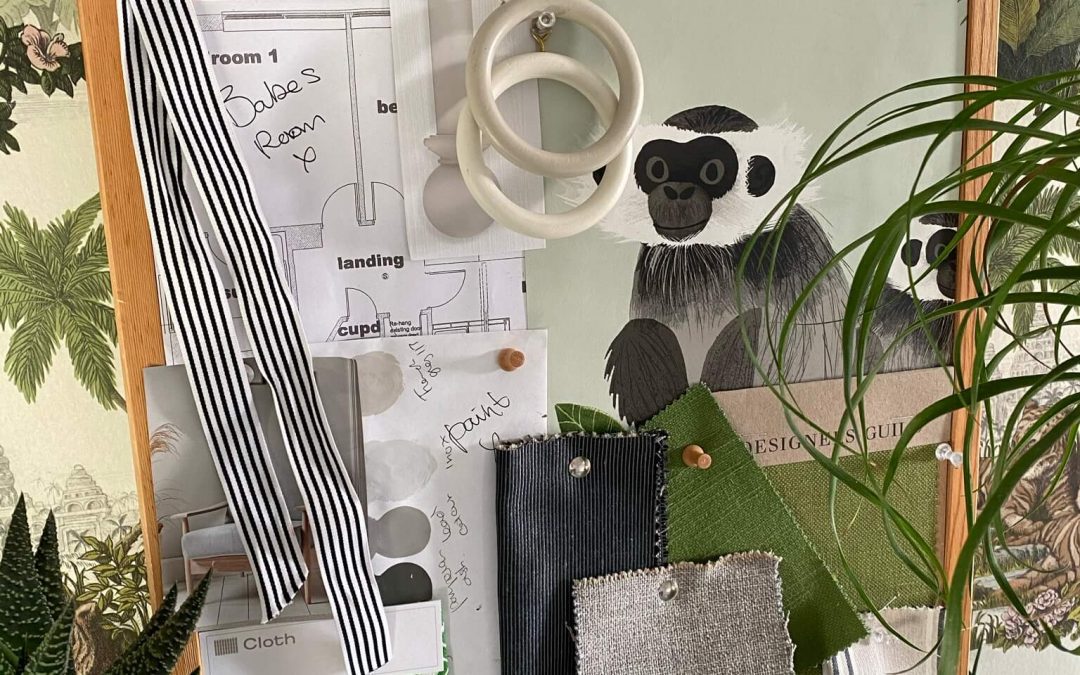Plans for a new project?
Are you planning a new extension or require new decoration? I expect you have a good vision of how you would like your interior to look or perhaps you are struggling with the whole process. Instinctively, you may cast your eye on Instagram and Pinterest for inspiration, and even drop into friends’ houses as they too become a curious focus of ideas for your new interior design project. It is essential to pull all your findings together into a workable frame to make sure you are on the right path. Creating a mood board will help you achieve this. A number one tool used by all interior designers.

Lets monkey around. Image credit - Tracey Andrews Interiors.
What is a mood board?
A mood board is a visual communication; a layout of images, concepts, sketches, products, and materials. They are effective in setting the scene, establishing a point of reference and understanding exactly what your style is all about. Constructed on physical boards or digitally on Power point or other design software. The samples and images help focus on what looks right and builds a foundation for your scheme.

… ‘To set a scene, mood boards are King, or (queen) but sketches are handy too… Tracey Andrews
How can you use them?
You can keep them as a visual memo and a useful reminder to keep on track with your initial design thoughts. They are personal, and say a lot about you. With experience, I find that my clients always return to those first ideas and wont stray far from them.

What do they contain?
Everything and anything! Magazine tear outs, swathes of ribbon, fabric and wallpaper samples, tassels, colour paint swabs, wood samples and what ever inspires you. I love to see my client’s mood boards when I arrive at a consultation as they have been busy collecting to find their style.
How are they constructed?
There are two types, physical and digital. Traditionally mood boards were always physical and built on heavy card. There is no doubt that they are the best way of seeing the materials and textures in real time, and there is nothing more special and immersive than that ‘touchy feely’ experience. However, digital boards are just as useful and perhaps better in some ways as they are portable and can be accessed instantly. Technology has allowed us to convey much more and quickly via the power of a click or swipe! Digital boards are as the name suggests - constructed on design platforms such as Power Point, Photoshop or any other purpose-built software. They are really effective in a multi layering and transferring ideas.
My designer memory - I shall never forget the joyous moments of presenting ‘real’ physical mood boards. There was always an air of excitement, anticipation then jubilation as the board was revealed. A culmination of all the back and forth discussions as over the weeks had come to this pinnacle moment and the result was a success – mission accomplished. Tracey Andrews
How to achieve a productive mood board.
Get busy on Instagram and Pinterest as they are good places to start the design process. You will find them on the internet. They are brilliant image sharing sites providing an abundance of inspiration. Also, scour businesses on the internet, visit lifestyle stores, gather brochures, textures, paint cards, fabric and carpet samples, anything that interests. When you have a selection place them on a board; wood, card or cork, it doesn’t matter as long as you have the information so as not to loose those instinctive and initial design thoughts. As you place them together you will quickly understand what looks together and see a pattern emerging. Your style!

A physical board is always nice, but digital versions serve good purpose too. Image credit Tracey Andrews.
You now have all you need.
You now have all the info you need to start your scheme. Keep the physical boards or scanned versions - save on your laptop or i pad and use them in your favourite store to impress. If you engage with a interior designer you will be well equipped and ready to start the design process.
There are hitches, It’s not foolproof.
Come on its not all plain sailing, sometimes it’s just not possible to gain all your certification through a swatch or image, you have to see that item in person and try it, particularly for comfort reasons. These include sofas and beds which with my experience, clients, no matter how much you love a fabric or style they have to be tested - always test for comfort.
Why you need a mood board - summary.
- Essential starting point to kick start a scheme.
- Build a story a story of what you like, it’s about you.
- Create concepts and vision.
- Express ideas to others, important if working with a designer.
- Use physical and digital boards together they work in unison
- Always try personal items for comfort before buying
- Remember, have fun!
If you need help with your projects please contact Tracey Andrews.
I’d love to see your mood boards, please send to tracey@traceyandrewsinteriors.co.uk

